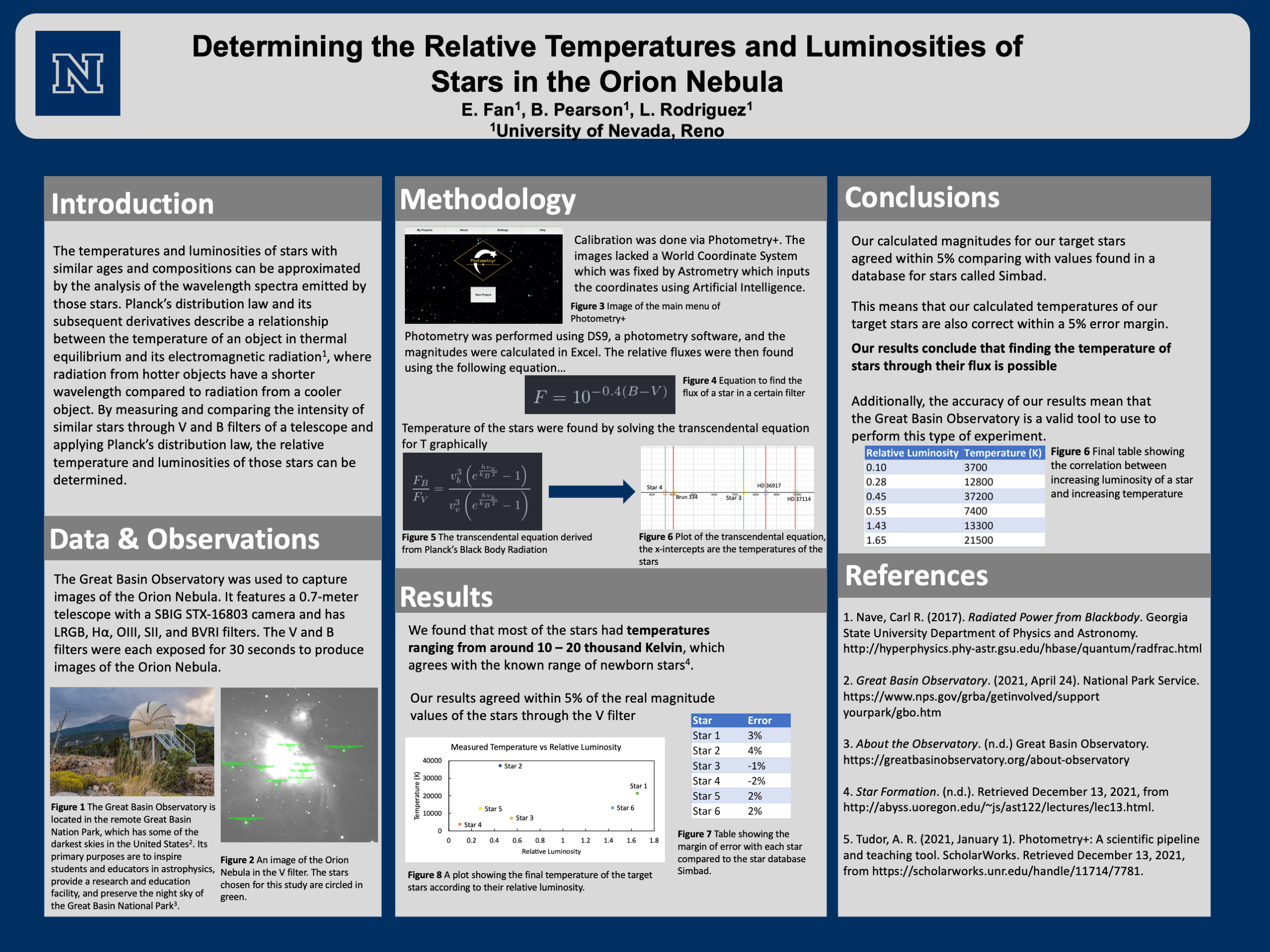
Category:
Science Update
Date:
Tuesday, April 12, 2022 - 1pm
The wavelength spectra that a star emits can give us an approximation of some of the most important information that we need from stars – their temperature and their luminosity. Max Planck’s famous radiation law and subsequent equations derived from it describe the relationship between the temperature of an object and the electromagnetic radiation it emits.
Students at the University of Nevada Reno put this fundamental law to work with the help of the Great Basin Observatory. Students compared stars in the Orion Nebula and determined that finding the temperature of a star through its flux (the amount of energy from a luminous object that reaches a given surface or location) was possible.
